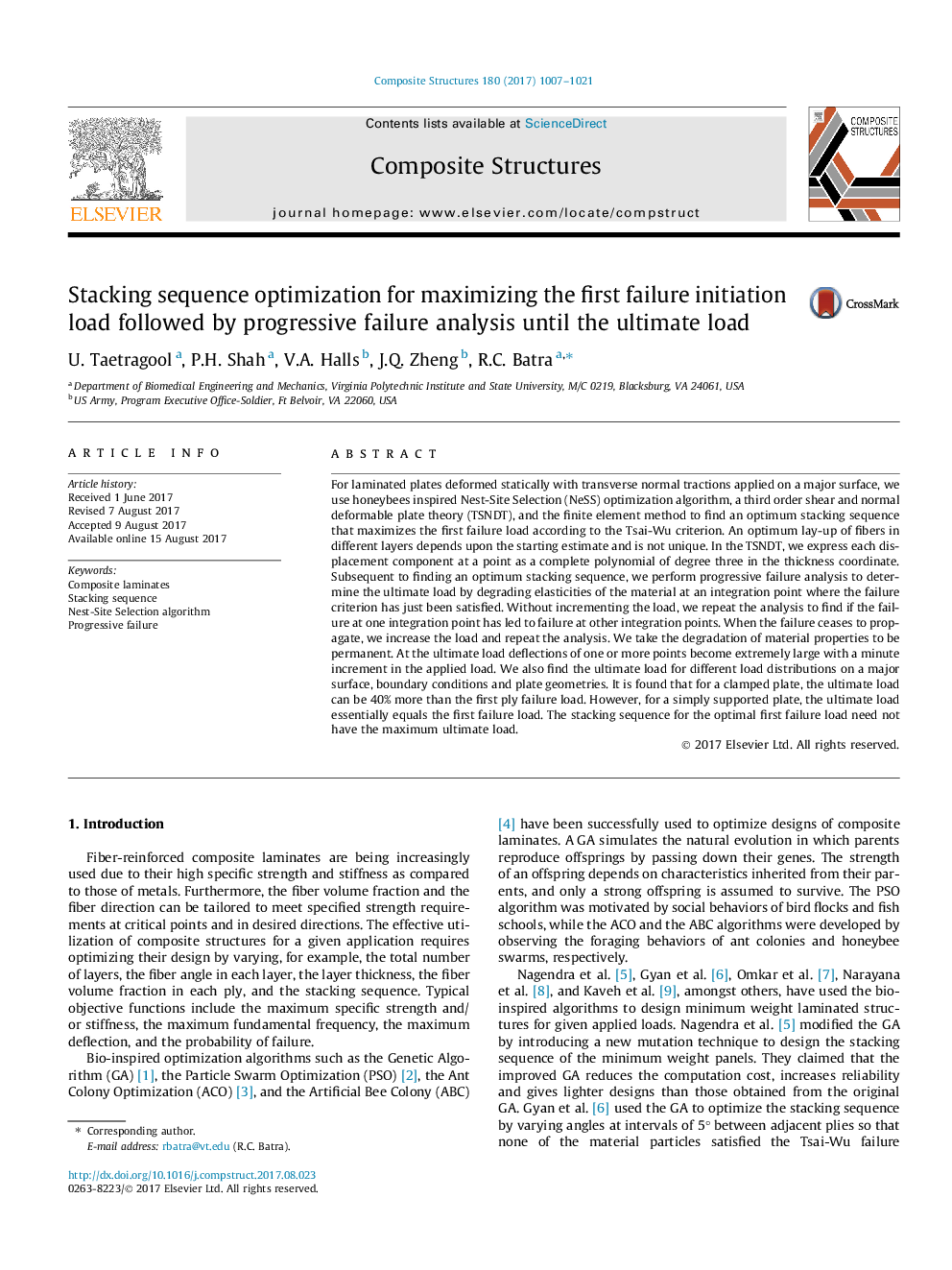| کد مقاله | کد نشریه | سال انتشار | مقاله انگلیسی | نسخه تمام متن |
|---|---|---|---|---|
| 4917700 | 1428527 | 2017 | 15 صفحه PDF | دانلود رایگان |
عنوان انگلیسی مقاله ISI
Stacking sequence optimization for maximizing the first failure initiation load followed by progressive failure analysis until the ultimate load
ترجمه فارسی عنوان
بهینه سازی توالی پشته برای به حداکثر رساندن اولین بار شروع خرابی و سپس آنالیز شکست پیشرونده تا بار نهایی
دانلود مقاله + سفارش ترجمه
دانلود مقاله ISI انگلیسی
رایگان برای ایرانیان
کلمات کلیدی
موضوعات مرتبط
مهندسی و علوم پایه
سایر رشته های مهندسی
مهندسی عمران و سازه
چکیده انگلیسی
For laminated plates deformed statically with transverse normal tractions applied on a major surface, we use honeybees inspired Nest-Site Selection (NeSS) optimization algorithm, a third order shear and normal deformable plate theory (TSNDT), and the finite element method to find an optimum stacking sequence that maximizes the first failure load according to the Tsai-Wu criterion. An optimum lay-up of fibers in different layers depends upon the starting estimate and is not unique. In the TSNDT, we express each displacement component at a point as a complete polynomial of degree three in the thickness coordinate. Subsequent to finding an optimum stacking sequence, we perform progressive failure analysis to determine the ultimate load by degrading elasticities of the material at an integration point where the failure criterion has just been satisfied. Without incrementing the load, we repeat the analysis to find if the failure at one integration point has led to failure at other integration points. When the failure ceases to propagate, we increase the load and repeat the analysis. We take the degradation of material properties to be permanent. At the ultimate load deflections of one or more points become extremely large with a minute increment in the applied load. We also find the ultimate load for different load distributions on a major surface, boundary conditions and plate geometries. It is found that for a clamped plate, the ultimate load can be 40% more than the first ply failure load. However, for a simply supported plate, the ultimate load essentially equals the first failure load. The stacking sequence for the optimal first failure load need not have the maximum ultimate load.
ناشر
Database: Elsevier - ScienceDirect (ساینس دایرکت)
Journal: Composite Structures - Volume 180, 15 November 2017, Pages 1007-1021
Journal: Composite Structures - Volume 180, 15 November 2017, Pages 1007-1021
نویسندگان
U. Taetragool, P.H. Shah, V.A. Halls, J.Q. Zheng, R.C. Batra,
